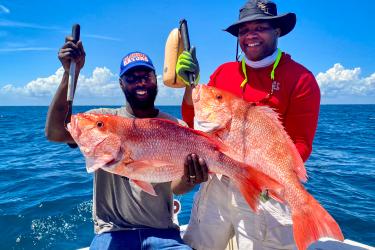Where did you grow up?
I grew up in the small coastal town of Islip, New York, located on the south shore of Long Island. I spent much of my childhood out in nature, whether combing the beaches for seashells, shark teeth, or shark carcasses (for my next science project) or scanning the horizons for fins or seals (in the winter). I was obsessed with sharks from an early age. Instead of begging my parents to take me to Disney World, I begged them to take me to fishing tournaments on Long Island or to the Florida Keys where we watched sharks and dolphins from our kayak or walking bridges.
Where did you go to school and in what subject did you get your degree(s)?
I received my Bachelor of Science degree at the University of Miami in 2006 where I double majored in marine science and biology. After that, I returned to Long Island to pursue my master’s degree under the advisement of Dr. Michael Frisk at Stony Brook University. My ambitious master’s project gave me tons of experience with laboratory work and field sampling using beam trawls and beach seines. I determined the ages of little skates using their vertebrae, acoustically tagged and tracked winter flounder, and analyzed gut contents of coastal fish. For my Ph.D., I was lucky enough to receive a NOAA Fisheries-Sea Grant Population Dynamics Fellowship to study spiny dogfish population dynamics, and worked in conjunction with scientists at the Northeast Fisheries Science Center. My dissertation explored distribution and abundance trends of spiny dogfish in the annual NOAA Fisheries Bottom Trawl Surveys. It looked at how dogfish habitat changed throughout their life cycle, habitat modeling, factors influencing catchability in the trawl survey, and how associations between fishermen and marine species like spiny dogfish change through time and space.
How did you come to work at the Southeast Fisheries Science Center?
During my childhood, my family vacationed in the Florida Keys a lot. I remember driving by the science center and the University of Miami’s Rosenstiel School of Marine, Atmospheric, and Earth Science across the street, thinking how amazing it would be to work there someday. I made this dream a reality in 2013 when I became a Cooperative Institute for Marine and Atmospheric Studies post-doctoral researcher at the University of Miami. Under Dr. John Walter’s advisement, I worked as a liaison between the science center’s assessment analysts and the Integrated Ecosystem Assessment team. Specifically, I helped with incorporating ecological considerations into traditional single-species assessment models. In 2015, I was hired into a federal position in the center’s Sustainable Fisheries Division in Miami.
What do you do at the science center?
My primary role at the Southeast Fisheries Science Center is to conduct stock assessments for federally managed species in the Gulf of America (formerly Gulf of Mexico). I dedicate most of my time to developing modeling tools to address ecosystem questions and support the center's shift to an ecosystem-based fisheries management approach. I am one of the few employees actively co-developing ecosystem models and contributing to the Integrated Ecosystem Assessment program. As part of a multi-disciplinary RESTORE project, I co-led development of a Gulf-wide ecosystem model, which was used recently to develop ecological reference points—benchmarks used to assess fishery status—for Gulf menhaden.
What do you like most about your position?
In addition to working with a great group of people throughout the Southeast United States, I really like being in a position where our work feeds directly into use by fisheries managers. Given the unique challenges that we face in the Southeast, there is lots of potential for us to improve our process and make a difference. There is no shortage of interesting research questions for us to pursue.
What advice would you have for someone interested in a career at NOAA Fisheries?
My advice would be to reach out to staff to get involved as early as possible in your career and to try out lots of different responsibilities and positions. I also strongly encourage anyone interested in studying marine biology to try and find paid internships or opportunities. We are very lucky in our field to be able to get paid for our efforts with less need for expensive loans!
Is there a book, quote, or person that influenced you to be the person that you are today? Tell us why.
I am forever grateful to my parents that they encouraged me to pursue my passions and never placed bounds on my future. I am also grateful to a long list of teachers and mentors during my grade school years who exposed me to a range of marine science opportunities. I don’t have a favorite quote, but I would say that one of the main motivators to me was endless people telling me I would never be able to make a living in marine science. They were wrong, and I’m glad I never listened to them.
What do you like to do outside of work?
In my spare time, I like to explore our new hometown of Cedar Point, North Carolina, with my daughter, Riley Grace, and my husband, Matt. We love walking local trails and inventorying wildlife and birds that we see. I’m looking forward to getting back into collecting fossilized shark teeth and kayaking.




